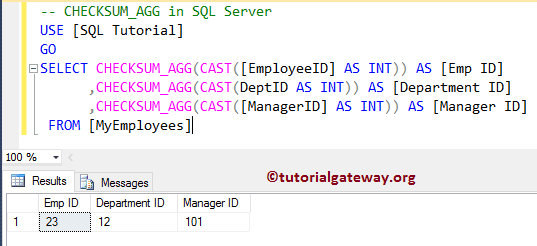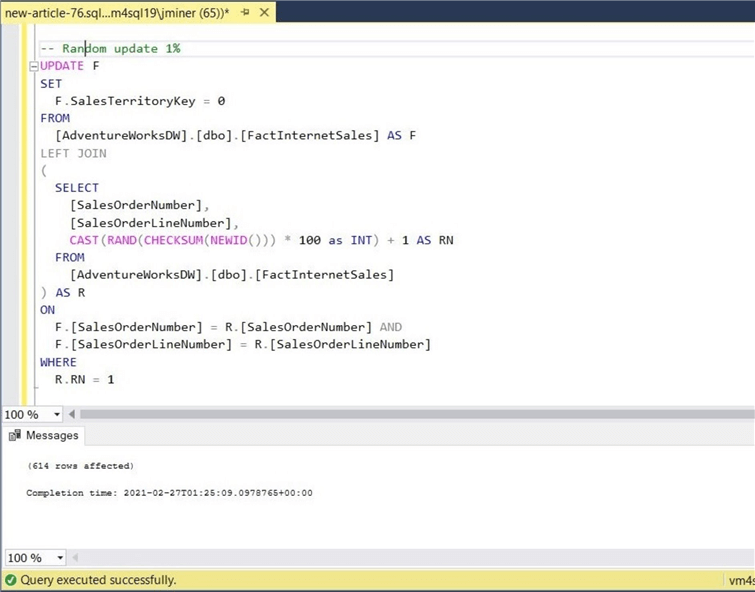

What are some of the caveats with using any of the CHECKSUM functions? However, if significant number of comparisons are made with a large number of columns, then this option should be researched further and tested for performance improvements over individual comparisons outlined in the first set of code. So if your performing very few entire row (or just about every column in the row) comparisons then ad-hoc comparisons may be optimal. In order for this query to be successful, it is necessary to build the CHECKSUM value ahead of time when inserting the data in order to perform the comparison in subsequent code.
Sql checksum update#
Without a CHECKSUM you would need to do the following:ĭownload the sample code here from the image above.Ĭompare the UPDATE code from the first example to this one using the CHECKSUM function. This would be helpful in a situation where all of the rows in a table need to be compared in order to perform an UPDATE. One example of using a CHECKSUM is to store the unique value for the entire row in a column for later comparison. The CHECKSUM is intended to build a hash index based on an expression or column list. So, “2Volvo Director 20” and “3Volvo Director 30” will yield the same value, however the CHECKSUM() function evaluates the type as well as compares the two strings and if they are equal, then only the same value is returned.What is the purpose of the using the CHECKSUM functionality? BINARY_CHECKSUM() returns the same value if the elements of two expressions have the same type and byte representation.

Another difference is in the comparison of expressions. An example of such a difference is the values generated for “DECIPHER” and “decipher” will be different in the case of a BINARY_CHECKSUM but will be the same for the CHECKSUM function (assuming that we have a case insensitive installation of the instance). The difference between CHECKSUM and BINARY_CHECKSUM is in the value generated for the string data-types. BINARY_CHECKSUM: As the name states, this returns the binary checksum value computed over a row or a list of expressions.This also works with the new analytic function’s OVER clause in SQL Server 2005. CHECKSUM_AGG: This returns the checksum of the values in a group and Null values are ignored in this case.There are three checksum functions available to you: So, if you have to use a datetime data-type column, then make sure that you get the exact date + hour/min.

Be careful when you include the datetime data-type columns since the granularity is 1/300th of a second and even a small variation will result into a different checksum value.So, explicitly define the column listing. We would not recommend using checksum(*) since the value that will get generated that way will be based on the column order of the table definition at run time which can easily change over a period of time.You need to make sure that the column(s) or expression order is the same between the two checksums that are being compared else the value would be different and will lead to issues.SQL Server Books Online has a lot of examples on this piece of functionality.Ī couple of things to watch out for when using these functions: This mechanism can then be used instead of joining with all the columns that make the record unique to see whether the record has been updated or not. If say you use it to compute and store a column at the table level to denote the checksum over the columns that make a record unique in a table, then this can be helpful in determining whether a row has changed or not. The key intent of the CHECKSUM functions is to build a hash index based on an expression or a column list.


 0 kommentar(er)
0 kommentar(er)
